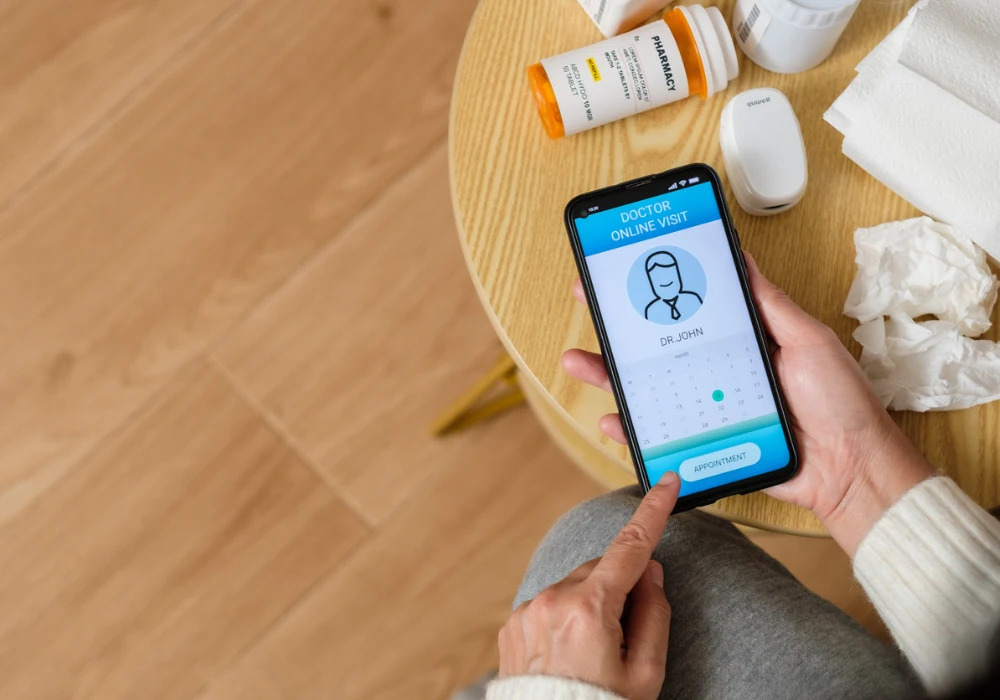Digital transformation has reshaped how patients interact with healthcare services. Online portals now play a central role in self-scheduling, communication and access to care. However, enabling safe and efficient navigation in a digital environment requires more than interface convenience. It demands intelligent systems that can interpret patient input, assess clinical urgency and recommend appropriate care. The Southern California Permanente Medical Group, which serves 4.9 million patients, developed and deployed the Kaiser Permanente Intelligent Navigator (KPIN) to fulfil these needs. Integrating clinical alerts and personalised care pathways, KPIN enhances both safety and accessibility, while supporting the organisation’s value-based care model. Its deployment offers insights into the challenges and outcomes of aligning digital access with clinical appropriateness.
Embedding Clinical Intelligence into Patient Access
As patients increasingly engage through digital channels, distinguishing between routine and urgent care needs becomes a critical function. Traditional patient portals often rely on static rules or limited automation, failing to adapt to the complexity of patient expressions. To address this, KPIN incorporates a Clinical Alert System (CAS) and a Clinical Navigation System (CNS), enabling it to process free-text input and evaluate clinical context dynamically. CAS identifies high-acuity presentations and redirects patients to urgent care or triage services, while CNS guides others to suitable offerings based on a range of variables, including age, gender and clinical history. This layered approach is central to mitigating safety risks while optimising access.
Prior to KPIN, the organisation piloted a Virtual Safety Net ecosystem with limited scalability due to constraints in recognising critical symptoms and aligning care pathways. KPIN replaced these systems, including Microsoft’s Language Understanding Intelligence System, by offering greater specificity, accuracy and integration. It operates within an omnichannel strategy, ensuring consistency across the patient portal, interactive voice response systems and agent-assisted channels. The consistent application of clinical guidelines across all interfaces reinforces both patient safety and operational cohesion. These mechanisms not only triage urgent cases but also conserve clinical resources by directing patients to appropriate care levels without unnecessary appointments.
Streamlining Booking and Reducing Friction
KPIN was designed with a focus on improving the user experience and reducing booking friction. From October 2024 to March 2025, the system processed nearly three million patient encounters, averaging over 19,000 daily. The abandonment rate was kept to just 2.94 percent, a significant improvement from previous tools, which often suffered from confusing workflows or excessive questioning. KPIN’s redesign limited follow-up prompts to no more than three per screen and introduced an adaptive flow that only presented additional pages when needed. These improvements contributed to reduced drop-off and increased successful outcomes.
Unlike many fee-for-service models that emphasise appointment scheduling, KPIN accounts for a broader spectrum of clinically appropriate responses. Patients may be offered alternatives such as messaging a provider, visiting a pharmacy or attending a nurse clinic. These non-appointment resolutions are counted in the successful booking rate, a metric newly introduced to reflect the diversity of digital outcomes. To avoid inflating results through repeated interactions, the adjusted successful booking rate was calculated using timestamp analysis and duplicate encounter filtering. The resulting rate of 53.68 percent indicates substantial engagement and effectiveness, particularly when compared with cross-industry metrics, such as the 70 percent average e-commerce cart abandonment rate.
Must Read: Reducing Patient No-Shows Through Digital Innovation
KPIN also enables seamless integration with live support. Patients whose needs are not met through digital booking can be routed to human agents operating around the clock. This hybrid model ensures continuity and inclusivity, offering additional support while maintaining the efficiencies of self-service options. By drawing on common databases and unified booking rules, all access channels adhere to shared clinical standards, further strengthening the reliability of the system.
Driving Performance Through Feedback and Collaboration
The success of KPIN reflects ongoing clinical and technical collaboration. Physician subject matter experts played a central role in designing and validating the system’s clinical pathways. Model training was based on a dataset of verified patient entries, reviewed by multidisciplinary teams. To ensure robustness and reduce latency, the system uses prompt-free few-shot transformer models, enabling it to generalise across patient inputs while maintaining real-time performance. This technical foundation allows rapid adaptation without sacrificing safety or accuracy.
Performance monitoring is continuous. Independent validation datasets, stratified by clinical scenario, are used to assess and refine model accuracy, precision, recall and F1-scores. KPIN’s CAS achieved accuracy levels above 96 percent, with strong precision and recall, while CNS maintained over 81 percent accuracy despite the broader variability of general patient input. These results support the system’s ability to manage both critical and routine interactions effectively.
Patient feedback is another essential dimension. More than 114,000 satisfaction surveys were distributed around the time of KPIN’s deployment, with response analysis showing statistically significant improvements in satisfaction, ease of navigation and effort perception. Sentiment analysis of open-ended comments revealed a marked increase in positive responses, up by over eight percentage points. These findings reinforce the system’s impact on user experience and offer direction for further development.
Future improvements will include expanding coverage to specialty departments, refining question specificity for vague inputs and enhancing conversational capabilities. While infrastructure demands and resource constraints may shape the pace of this growth, the system’s design allows for modular updates, informed by continuous user interaction and feedback from frontline clinicians. The system also provides valuable insight into how patients describe symptoms, enabling targeted refinement of clinical models and messaging strategies.
KPIN represents a significant advancement in aligning digital convenience with clinical safety and appropriateness. Its development and implementation within an integrated, value-based care model illustrate how organisations can move beyond vendor limitations to build systems tailored to patient needs and operational realities. By intelligently triaging symptoms, streamlining access and learning from user feedback, KPIN strengthens the digital front door while safeguarding quality and coordination. Such systems offer a roadmap for scalable, patient-centred innovation.
Source: npj digital medicine
Image Credit: iStock










